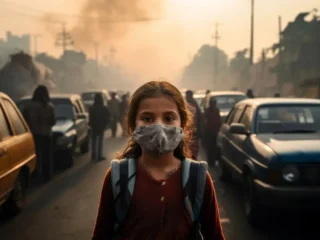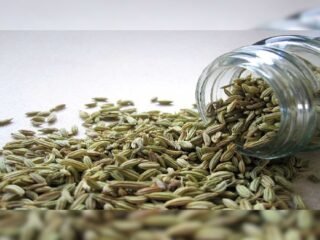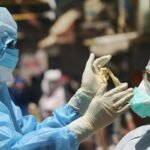New Delhi, 15 October, 2025: We often think of skin aging as something that happens gradually in our 40s or 50s — but for many people today, the first visible signs of aging appear much earlier, sometimes even before 30. Fine lines, dullness, uneven texture, and under-eye shadows are increasingly common among young adults, leaving many wondering why their skin looks tired despite their age.
The truth is, early skin aging isn’t just about genetics. Modern lifestyles, environmental factors, stress, and skincare habits play a huge role in accelerating visible changes. Understanding the root causes can help you protect your skin, restore its glow, and slow down premature aging.
Understanding Premature Skin Aging
Skin naturally changes over time due to internal and external factors. While intrinsic aging (natural, genetic aging) happens gradually, extrinsic aging is accelerated by external stressors such as UV exposure, pollution, lifestyle habits, and skincare mistakes.
Signs of premature skin aging include:
- Fine lines and early wrinkles
- Dull, uneven skin tone
- Loss of elasticity or firmness
- Dehydration and rough texture
- Dark circles and under-eye puffiness
- Early pigmentation or sunspots
These changes can start subtly but progress quickly when left unaddressed. Early intervention can make a significant difference.
The Real Reasons Your Skin Looks Tired Before 30
1. Excessive Sun Exposure Without Protection
The number one cause of premature aging is UV damage. Sun exposure breaks down collagen and elastin — two key proteins that keep skin firm and youthful. Even brief, unprotected exposure contributes to:
- Fine lines and wrinkles
- Uneven pigmentation and sunspots
- Loss of elasticity and early sagging
Many young adults skip daily sunscreen, assuming they’re too young to worry. But dermatologists agree: daily sun protection is non-negotiable, even on cloudy days.
2. Chronic Stress and Lack of Sleep
Stress doesn’t just affect your mood — it affects your skin health too. High levels of cortisol (the stress hormone) can:
- Increase inflammation, worsening acne and sensitivity
- Accelerate collagen breakdown, leading to dull and sagging skin
- Impair skin barrier function, causing dehydration
Lack of quality sleep compounds the problem. During deep sleep, the body repairs and regenerates skin cells. Insufficient rest leads to:
- Dark circles and puffiness
- Dull complexion
- Slower cell turnover, making the skin look tired and uneven
3. Dehydration and Poor Nutrition
Your skin reflects what’s happening inside your body. A diet lacking in essential nutrients, antioxidants, and hydration can leave your skin dull and tired.
- Dehydration leads to dryness, fine lines, and a crepey texture.
- Diets high in processed foods, sugar, and unhealthy fats increase inflammation and oxidative stress.
- Lack of antioxidants means the skin is more vulnerable to free radical damage, speeding up aging.
Healthy skin thrives on water, vitamins, healthy fats, and antioxidants.
4. Overuse or Misuse of Skincare Products
Ironically, some skincare routines can damage the skin barrier instead of helping it. Over-exfoliation, harsh products, or using multiple actives without guidance can cause:
- Redness, sensitivity, and micro-tears in the skin
- Increased moisture loss
- Compromised barrier leading to premature aging
Skin doesn’t need a 12-step routine to stay healthy. Consistency with a few effective products is more beneficial than aggressive treatments.
5. Environmental Pollution and Blue Light Exposure
Modern urban living exposes skin to pollutants, dust, and toxins daily. These free radicals attack skin cells, causing oxidative stress that leads to:
- Pigmentation and dullness
- Breakdown of collagen and elastin
- Premature wrinkles and rough texture
Prolonged exposure to blue light from screens can also contribute to oxidative damage, pigmentation, and tired-looking skin.
6. Lack of Sun Protection and Preventive Care
Many young adults only use sunscreen at the beach or during vacations. But daily exposure — walking to work, sitting by a window, or scrolling on your phone — contributes to long-term damage.
- UVA rays penetrate deeper into the skin and are present year-round.
- Without protection, they silently accelerate aging over time.
A broad-spectrum SPF 30 or higher is essential for prevention.
7. Smoking, Alcohol, and Unhealthy Habits
Lifestyle choices play a huge role in skin health. Smoking reduces blood flow and oxygen to the skin, depleting essential nutrients and collagen. Alcohol dehydrates the body and skin, leaving it:
- Dry, dull, and puffy
- Prone to redness and inflammation
- More vulnerable to premature aging
Even occasional excess can have a cumulative effect.
The Science Behind Premature Aging
The visible signs of aging are driven by cellular changes:
- Collagen and elastin breakdown: UV rays and oxidative stress damage these structural proteins.
- Free radical damage: Pollution and poor diet increase oxidative stress, speeding up skin aging.
- Inflammation: Stress, lack of sleep, and diet trigger inflammation, accelerating cellular aging.
- Slower cell turnover: As early as your mid-20s, skin cell renewal starts to slow, resulting in a tired appearance.
Understanding this biology helps explain why early prevention is more effective than trying to reverse damage later.
How to Protect and Revive Tired Skin
1. Commit to Daily Sun Protection
- Apply a broad-spectrum SPF 30 or higher daily, even indoors.
- Reapply every 2–3 hours when outside.
- Wear hats or sunglasses for added protection.
2. Adopt a Gentle, Consistent Skincare Routine
- Cleanse gently twice a day.
- Use a moisturizer that supports your skin barrier.
- Add antioxidants (like vitamin C) in the morning and retinoids at night if recommended.
- Avoid over-exfoliating and using too many actives at once.
3. Prioritize Sleep and Stress Management
- Aim for 7–9 hours of quality sleep each night.
- Manage stress through breathing exercises, walks, or journaling.
- A calm nervous system benefits both mind and skin.
4. Hydrate and Nourish Your Skin from Within
- Drink enough water throughout the day.
- Eat foods rich in antioxidants, healthy fats, vitamins, and minerals (fruits, vegetables, nuts, fish).
- Limit sugar and processed foods that accelerate inflammation.
5. Protect Against Environmental Damage
- Cleanse your face after exposure to pollution.
- Use antioxidant serums to fight free radicals.
- Limit prolonged screen time or use blue light filters.
6. Ditch Unhealthy Habits
- Quit smoking to restore oxygen and nutrients to your skin.
- Limit alcohol to avoid dehydration and inflammation.
- Replace these habits with healthier alternatives like exercise or hydration.
When to See a Dermatologist
If tired-looking skin persists despite a good routine, consulting a dermatologist can help:
- Professional treatments such as chemical peels, laser therapy, or microneedling can boost collagen production.
- Prescription skincare may be necessary to address pigmentation or barrier damage.
- A dermatologist can tailor a skincare plan based on your skin type and lifestyle.
Early professional guidance can slow the aging process effectively.
Embracing Preventive Skincare Early
One of the biggest myths is that anti-aging skincare should start after 30 or 40. In reality, prevention in your 20s is key to maintaining healthy, youthful skin. Simple habits like daily sunscreen, hydration, and gentle skincare can delay visible signs of aging for years.
Aging is a natural process — and there’s nothing wrong with it. But premature aging caused by lifestyle factors is largely preventable.
If your skin looks tired before 30, you’re not alone — but you also don’t have to accept it as inevitable. Modern lifestyles, stress, sun exposure, poor diet, and environmental damage are accelerating visible aging. The good news is that small, consistent changes can make a big difference.
Protecting your skin isn’t about perfection; it’s about consistency and balance. Wear sunscreen daily, nourish your body, sleep well, manage stress, and be gentle with your skin. These steps will not only keep your skin glowing today but also protect its health for years to come.








